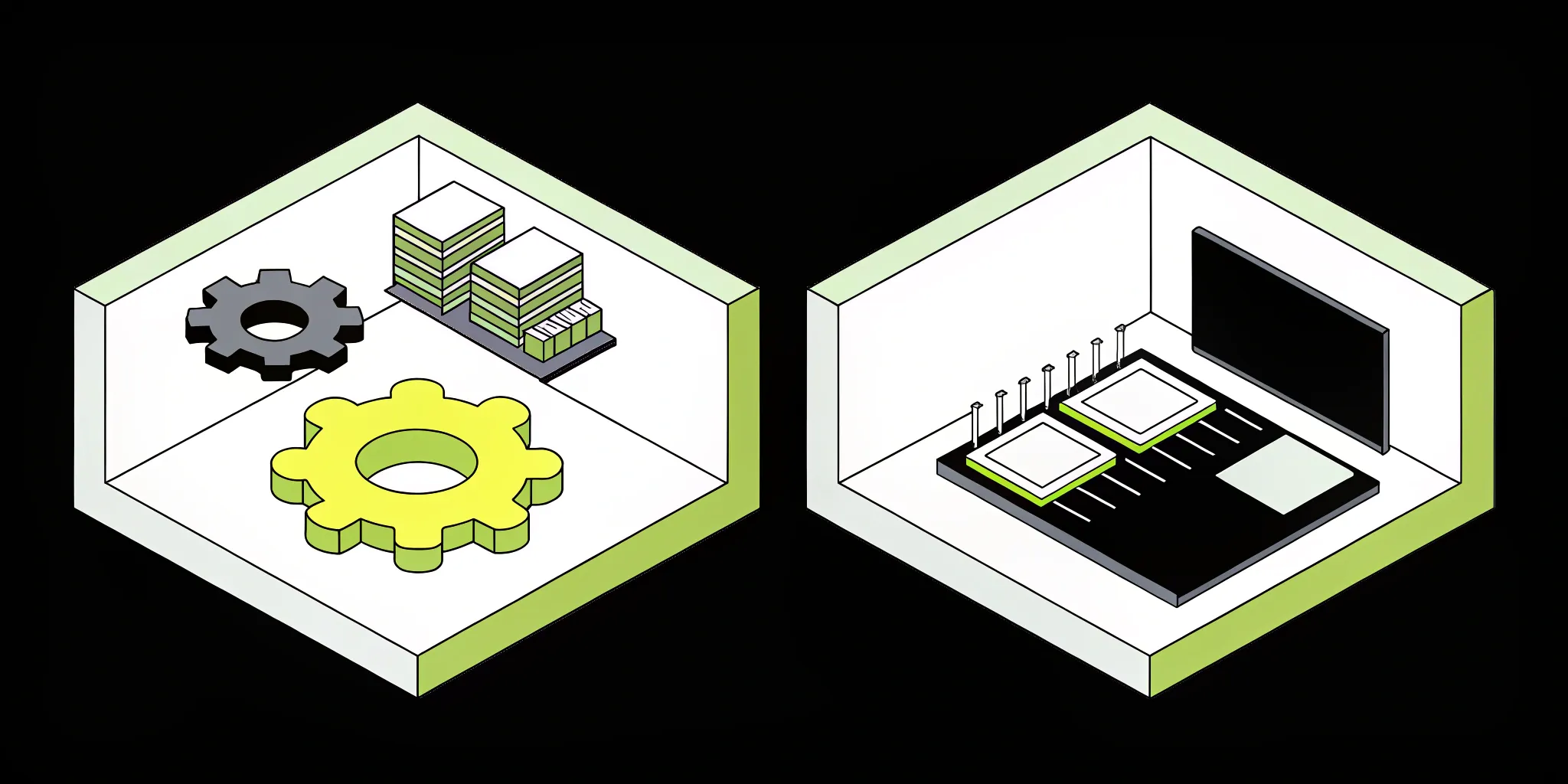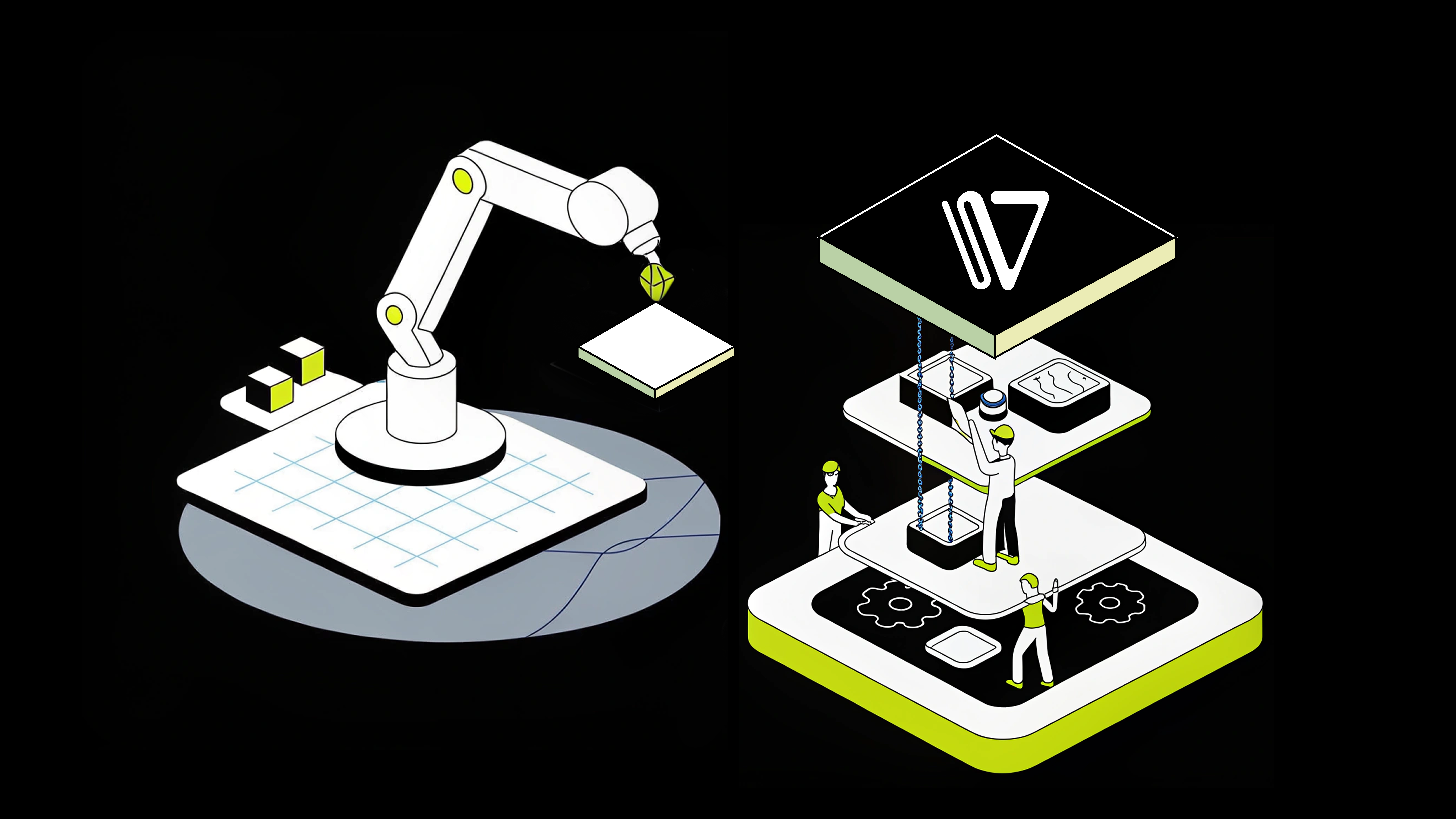Deploy AI Models to Production Nearly 4X Faster with Cake

Enterprises using Cake have achieved up to 3.9x faster deployment of AI models into production, moving from months of setup to just weeks. Traditional approaches are hindered by infrastructure configuration, compliance approvals, and tool integration, all of which extend project timelines and delay impact. Cake removes those friction points with a pre-integrated, cloud-agnostic platform that brings orchestration, monitoring, and governance together. The result is that teams see business value from their models much faster.
Industry benchmarks confirm how significant that shift is. Moving from months to weeks translates to nearly a fourfold acceleration, or about 3.9x faster model deployment. Too often, enterprises spend months trying to move a model from prototype to production. The challenge is not the models themselves but the infrastructure that surrounds them. Standing up orchestration frameworks, configuring autoscaling, setting up monitoring, and ensuring compliance all take time. By the time a model is ready for release, opportunities may have shifted.
Cake collapses these timelines. By providing orchestration, monitoring, compliance, and open source integrations in a single platform, it transforms deployment from a slow, piecemeal process into a rapid cycle. What once took months can now be done in weeks.
Key takeaways
- Traditional AI deployments often take two to three months due to infrastructure, compliance, and integration overhead.
- Enterprises using Cake, including Ping and Glean.ai, moved from months to weeks, achieving up to 3.9x faster deployment.
- Cake delivers speed by combining pre-wired infrastructure, built-in compliance, and open source integrations in a unified, cloud-agnostic platform.
Why traditional deployments take so long
Industry studies consistently show that deploying models into production is a lengthy process. Algorithmia’s State of Enterprise ML report found that half of organizations take between 8 and 90 days to push a single model into production. The New Stack reported that 40% of companies require more than a month, with only 14% managing it in under a week. Other analyses note that for many enterprises, deployments can stretch to three months or more, especially for large-scale LLM projects. Other industry reports similarly highlight that these timelines reflect the overhead of infrastructure setup, compliance approvals, and integration across multiple tools.
Against this backdrop, Cake’s impact is clear. Moving from months to weeks translates to nearly a fourfold acceleration, or about 3.9x faster model deployment.
How Cake helps teams deploy faster
Glean.ai, an AI-powered accounts payable platform, is one of several enterprises that has proven a faster path with Cake. The Glean engineering team needed to build a custom LLM stack, a project that would traditionally require months of infrastructure work. With Cake, they had it up and running in weeks. “Cake helps you deploy the entire ML stack, everything you need in one package,” said Artiom Tarasiuk, CTO at Glean.ai. “It is an all-in-one SaaS platform for MLOps that requires far less effort.” By removing infrastructure hurdles, Cake gave Glean the speed and confidence to focus on building their product instead of maintaining infrastructure.
"[Cake] has enabled us to release a new model much faster than we would have otherwise."
—Bill Granfield, Machine Learning Engineering Lead, Ping
Ping, a data platform supporting the insurance industry, saw a similar acceleration. By consolidating its infrastructure on Cake, the team was able to move new models into production much faster than before. “With Cake, we are collecting this data several times faster than we were before, in a way that makes it easy to analyze what we have, understand the provenance of annotations, and measure the performance of different annotators,” said Bill Granfield, Machine Learning Engineering Lead at Ping. “It has enabled us to release a new model much faster than we would have otherwise.”
Together, these examples show how enterprises that once waited months to see results are now putting models into production in a fraction of the time.
How Cake accelerates deployment cycles
The acceleration that enterprises like Glean.ai and Ping achieved is not luck. It comes from how Cake is built to streamline every step of the deployment process. Traditional approaches require teams to spend weeks preparing infrastructure, securing compliance approvals, and stitching together disparate open source tools before a single model can run in production. Cake removes those friction points by delivering a platform where orchestration, scaling, monitoring, and governance are already in place. Instead of reinventing the wheel for each project, engineers can focus on the model itself and get it into production far faster.
Pre-wired infrastructure
Scaling, orchestration, and monitoring are ready from day one. Teams no longer spend weeks configuring Kubernetes or wiring together Argo workflows. Instead, they can move directly into experimentation and deployment.
Compliance and security built in
SOC 2 and HIPAA readiness are already included in the platform. This removes the cycle of audits and documentation that typically push back release dates. With compliance baked in, enterprises shorten approvals and lower risk.
Open source integrations
Cake supports the tools teams already know and use, including MLflow, Kubeflow, and Ray. There is no need to migrate workloads or re-platform. This flexibility keeps projects moving instead of waiting on new vendor integrations.
Unified observability
Monitoring, tracing, and performance tracking are part of the stack. Enterprises avoid the trial-and-error of bolting on observability after the fact and can instead validate deployments with confidence.
BLOG: How to build a scalable GenAI infrastructure in just 48 hours
The value of faster deployments
Reducing deployment time by nearly fourfold is more than a technical improvement. It has ripple effects across the entire business. Faster deployment changes how quickly organizations realize value from AI investments, how often they can iterate and improve, and how effectively they compete in markets where speed makes the difference. By turning long deployment cycles into rapid release cycles, Cake helps enterprises shift AI from an experimental initiative into a dependable driver of business impact.
1. Faster time to value
Models deliver measurable results sooner, whether that means improved customer experiences, better insights, or cost savings. Instead of waiting a quarter or more, enterprises see impact in weeks.
2. More frequent releases
Shorter deployment cycles enable a culture of iteration. Teams can deploy, measure, and improve models continuously, leading to higher-quality outcomes and a faster feedback loop.
3. Agility in competitive markets
In industries where speed matters, deploying AI-powered features first can be a decisive advantage. Faster deployment means enterprises can respond to opportunities quickly and stay ahead of competitors.
Conclusion
Case studies from Ping and Glean.ai demonstrate that enterprises using Cake can deploy models to production 3.9x faster than traditional approaches. Industry benchmarks confirm that traditional deployments often take months, while Cake customers are seeing results in weeks. By eliminating infrastructure hurdles and streamlining the deployment process, Cake transforms AI delivery from a slow march into a rapid cycle of experimentation and impact.
Ready to cut months from your deployment timelines? Talk to us.
About Author

Cake Team
More articles from Cake Team
Related Post

MLOps vs. DevOps: Understanding the Key Differences

Cake Team

LLMOps Explained: Your Guide to Managing Large Language Models

Cake Team

AI Infrastructure: A Primer

Cake Team

MLOps in Retail: A Practical Guide to Applications

Cake Team